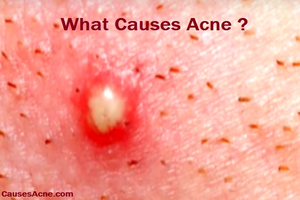
Adult Acne Causes and Treatments
As a teenager going through puberty, you expect acne to be a part of the hormonal changes your body is going through. But once puberty is over, so should the acne. In some people that is the case and acne is never seen or heard from again. But for others, acne continues to be a problem in adulthood—even for those who might not have suffered from it as a kid.
Adult acne affects approximately 50% of adult women and 25% of adult men. About a third of these people also suffer from acne on their body. The amount of adults visiting dermatologists for acne has increased dramatically over the past few decades.
What Causes Adult Acne?
There is no single cause of adult acne, but there are a few contributing factors that appear to play a big role in producing acne in adults. Among those factors are:
- Hormones which lead to an excess of oil secretion
- Stress
- Cosmetics
- Resistance to bacteria leading to infection
- Hair ducts not closed properly
Many pregnant and premenstrual women often experience acne because of the constant fluctuation of hormones. This up and down in hormone activity causes the sebaceous glands to secrete more oil. Excess oil leads to your pores becoming clogged and bacteria getting trapped. All this leads to acne.
Stress is another contributing factor of adult acne as it too causes the body to secrete too much oil. If you are under a lot of stress, this affects your hormone levels as well leading to clogged pores.
Washing your face twice a day is the ideal way to help ward off acne. One of the worst things to do is go to bed with a full face of make up. Most make up is nothing but a combination of chemicals that do more harm than good for your face. By leaving it on overnight, those chemicals and oils penetrate the skin and clog up your pores.
Infections are never good, but when your body is trying to fight them, the end result is inflammation—a leading cause of acne. But another problem is that many of today’s bacteria have become resistant to antibiotics whereby increasing the chances of infection and the more infections that occur, the greater your chances are of developing acne.
Finally, pimples, the plug of debris that gets stuck in your hair duct, can form either a blackhead or a whitehead. It is considered a blackhead when the duct is open. When it is closed over, it is a whitehead. Whiteheads lead to the pustules, papules, cysts and nodules of acne because they cause the hair duct walls to rupture.
Treatment Options for Adult Acne
Thankfully, as was the case when you were a teenager, there are many treatment options and remedies for adult acne. Some of those treatments include:
Topical treatments
If you walk into your local pharmacy, you have no doubt come across an aisle dedicated to acne treatments. Most contain benzoyl peroxide which kills the bacteria that causes acne and removes the dead skin cells and excess oil that clogs your pores.� Salicylic acid is another ingredient found to treat acne successfully. It stops the cells in your hair follicles from shedding and then clogging your pores. It is also able to diminish both whiteheads and blackheads. Just be prepared to experience some minor stinging and/or redness which dissipate after your face gets accustomed to these treatments.
Alpha Hydroxy acid (including lactic acid, glycolic acid and gluconic acid) reduce the leading cause of acne—inflammation—and remove dead skin cells. If you have scars from your acne, alpha hydroxy acid can reduce the look of them.
Prescription treatments
For more severe cases of adult acne, a prescribed medication may work better than what is in your local drug store. There are many popular and highly effective medications that a dermatologist can prescribe for adult acne that does not respond to over-the-counter treatments. Sometimes antibiotic pills are prescribed to reduce inflammation or birth control pills for women are prescribed to keep hormone levels from fluctuating. Some prescription medications do have side effects so it is important to review them with your doctor.
Cosmetic procedures
Laser therapy, chemical peels and microdermabrasion are all ways to control and eliminate adult acne. Laser attacks the skin at its deepest layers by going after the sebaceous glands to ensure they do not produce an excess of oil. Light therapy sets its sights on killing the bacteria that causes inflammation.
At-home remedies
Of course, if you want to save money, you can concoct your own acne remedy. Baking soda, honey, aloe vera and apple cider vinegar are just a few natural ingredients that can be used to clear up adult acne. The side effects are usually minimal compared with other treatments.
As unpleasant as adult acne can be, there is hope for treating it. If you are an adult suffering from acne, consult with your doctor to rule out anything systemic that might be causing the problem. If everything checks out, try an over-the-counter treatment along with twice daily cleansing of your face. If that does not work, see a dermatologist for a stronger form of treatment. Remember, acne is usually a phase and, like all phases, this too shall soon pass.
